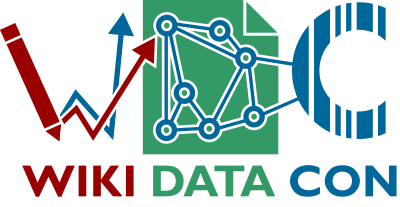Wikidata:WikidataCon 2019/Attend/Photography policy

|
|
|
|
|
|
|
|
|
|
Documenting a conference is an important activity, and Wikimedians have a natural desire to document the world around them. But when we meet in person as colleagues, it is important also to recognize the privacy needs of our fellow Wikimedians.
This is why, following the first experiment of the Wikimania policy, we want to make sure that all pictures taken during the event must have the explicit consent of people who appear on the pictures before being published online.
Lanyards and meaning
[edit]- Regular grey lanyard: Photography with permission
- Orange lanyard: No photography
What this means in practice
[edit]- If someone is wearing the “no photography” lanyard, they do not wish to appear in any photography or video.
- If someone is wearing the “photography with permission” lanyard, please obtain consent for any pictures or video you take.
- In obtaining consent, it is useful to also specify the intended use the image. For example, whether you will upload to a public website with a free license (e.g. Wikimedia Commons); or on to a non-public website (e.g. Facebook), or to be kept private (e.g. emailed directly to the person).
- For photographs of crowds (e.g. of the foyer area with many people in the distance) the key factor is identifiability. If a person is identifiable - either because they appear large in the photograph or because their appearance is distinctive (e.g. hairstyle or particular clothing), please obtain consent from them.
- Please be especially careful of photography in situations where people are less likely to want to be photographed in general. This includes while eating food, working on a computer, or when having a private conversation.
How to determine consent
[edit]- Context. The person is clearly indicating they are willing to be photographed. For example:
- Anybody standing up for a group photo is considered to be clearly indicating they wish to be part of the photo and for it be shared publicly with a free-license.
- Anybody speaking publicly on stage is considered to be clearly indicating they accept pictures/video of them presenting being made and shared on Wikimedia Commons. [Except if they are wearing the no-photo lanyard.]
- Asking before. Asking the person if they are willing to be photographed before taking the photo. This will often mean they are facing the camera, posing/smiling and it will be clear in the image that they are aware of the photograph’s existence.
- Asking after. Asking the person if they approve of the photograph after is has been taken. This applies to “candid” photography where the person didn’t know they were being photographed at the time. Verbal approval is sufficient - you do not need a signed consent form.
- It is the photographer’s responsibility to obtain consent through one of these methods.
If you can see the person being photographed, but they can't see you - you need to obtain consent.
The traditional Wikimedia-event default position that the subject is responsible to identify photographs of themselves on Commons and request takedown, after the fact, does NOT constitute consent.
Delete a picture
[edit]- If you notice that a picture of you has been uploaded on Commons without your consent, and you want it to be deleted, please contact Léna or PierreSelim who can delete it without discussion during or after the event.